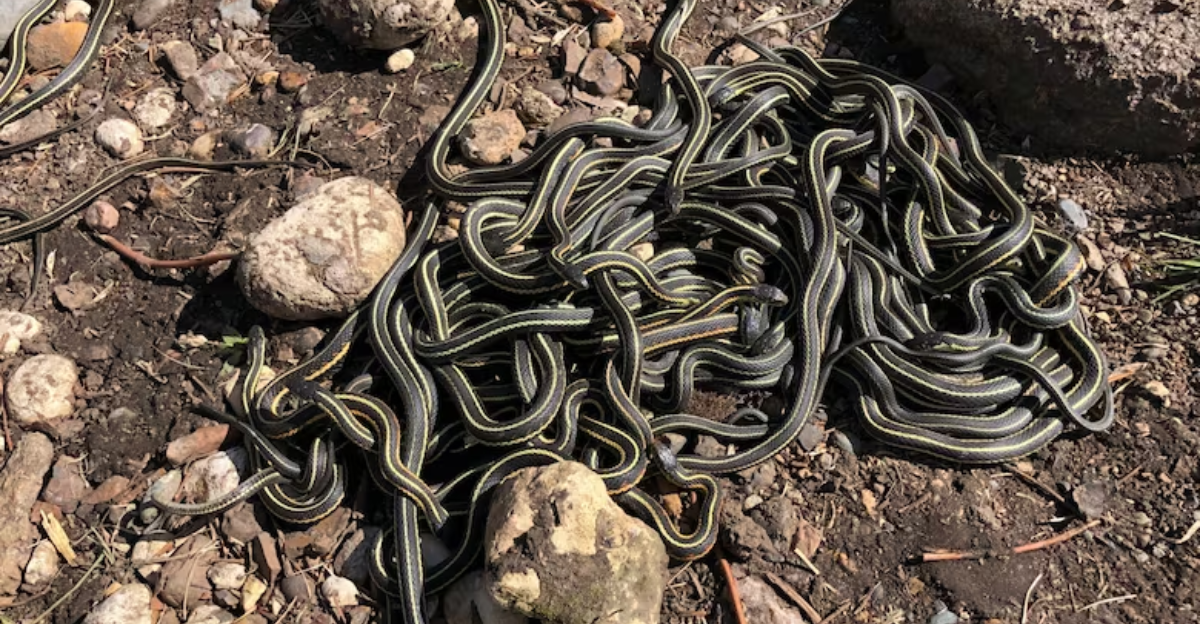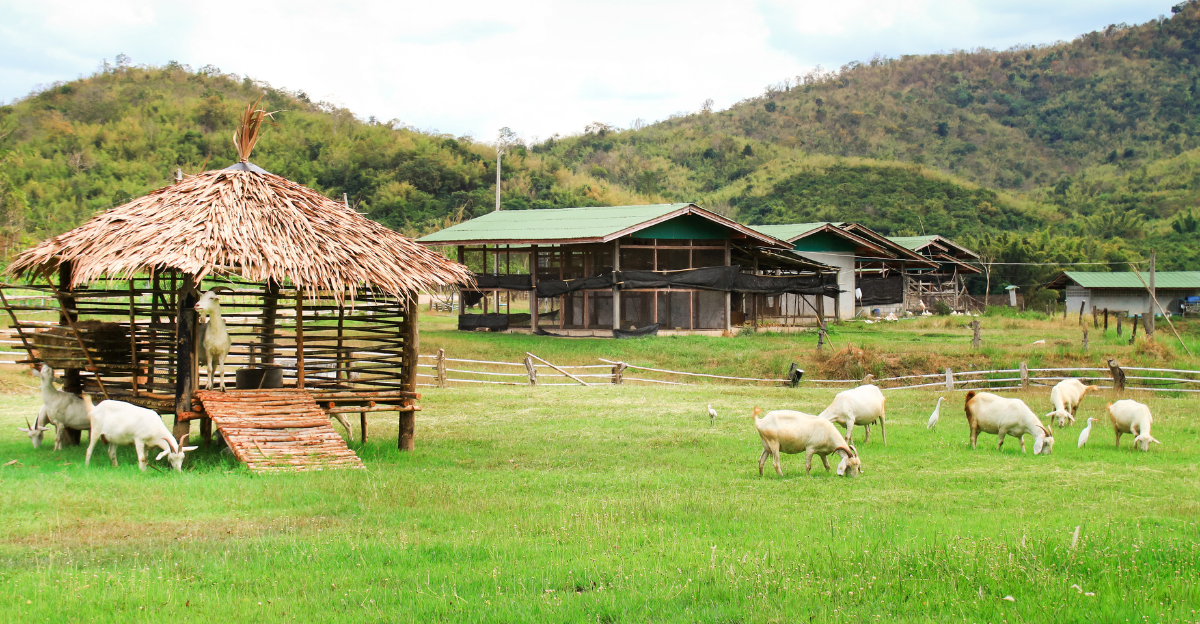
Throughout history, strange animal behavior has preceded natural disasters—from rats fleeing Greek cities before earthquakes to modern sensors tracking wildlife movement ahead of seismic events. While experts debate the ability to predict earthquakes, evidence shows many animals react to subtle environmental shifts long before humans do.
These behaviors may hold the key to early warning systems that save lives. Could animals be detecting changes in magnetic fields, air pressure, or vibrations below our range of perception? The answer remains elusive—but the consistency of these patterns is turning ancient observations into serious modern research worth paying close attention to.
Below are some of the bizarre animal behaviours noted before natural disasters like volcano eruptions and earthquakes happened.
Elephants Ran Before the 2004 Tsunami—And Survived

In 2004, as the Indian Ocean tsunami killed over 225,000 people, elephants in Thailand reportedly screamed and ran for higher ground long before waves hit. “Thai elephants relocated to higher ground prior to the tsunami’s arrival,” eyewitnesses said.
Experts believe elephants can sense infrasound—low-frequency vibrations that travel through the earth—enabling them to detect seismic activity early. Their large, sensitive feet may act like natural seismographs, picking up signals we miss entirely.
These reports weren’t isolated. Similar incidents have occurred in other coastal areas, suggesting elephants may possess innate disaster-sensing abilities that outperform even the most advanced human technology.
Snakes Leaving Hibernation Before Earthquakes

In 1975, days before a 7.3 magnitude quake hit Haicheng, China, snakes were seen abandoning hibernation and freezing above ground—a behavior so unusual it helped trigger a mass evacuation that saved lives.
Snakes are highly attuned to environmental changes. Their forked tongues sample airborne and ground-based chemical shifts, their bodies detect fine vibrations, and their infrared vision senses minute heat changes in soil and groundwater.
These subtle signals may precede seismic activity, explaining why snakes emerge despite the deadly cold. Scientists continue to study whether this odd behavior could be consistently harnessed for disaster forecasting in earthquake-prone regions.
Mountain Goats May Predict Volcanic Eruptions

On the slopes of Mount Etna, goat herders have long noticed their animals behaving oddly before eruptions. Now, science confirms this folk wisdom. Researchers from the Max Planck Institute outfitted goats with sensors and monitored them through 27 eruptions. Remarkably, the animals moved from high pastures to lower forests as much as 14 hours before volcanic activity became detectable.
Scientists suspect they’re reacting to early emissions of gases like sulfur dioxide. With their consistent responses, these goats may be picking up warning signs sooner than modern instruments—highlighting how animal behavior might play a role in future disaster prediction models.
Why Dogs Panic Before Earthquakes Hit

Dogs often act out before earthquakes—whining, barking excessively, or attempting to flee. These behaviors have drawn scientific interest, especially after events like China’s 1975 Haicheng quake, when residents noticed dogs refusing to go outside.
Dogs hear ultrasonic frequencies, possibly picking up the sound of shifting rocks deep underground. Their keen sense of smell might detect gases released before seismic activity. Even more intriguing, researchers believe dogs could sense fluctuations in the Earth’s electromagnetic field.
While the mechanisms remain uncertain, consistent accounts of canine restlessness hours before tremors suggest dogs might one day contribute to improved early-warning systems.
Bees Rush Home Just Before Rain Begins

Beekeepers frequently report swarms returning to the hive minutes before rain, even without visible weather changes. Scientists now believe bees detect approaching storms using several advanced sensory tools. Their bodies have hairs sensitive to barometric pressure, allowing them to register changes imperceptible to humans.
Bees may also detect electrostatic shifts in storm clouds and subtle changes in humidity or solar radiation. These instincts are essential to survival—being caught in a downpour can cripple or kill them. While the behavior may seem mysterious, it reflects a finely tuned response system that helps these pollinators survive and adapt to sudden environmental changes.
Floating Ant Rafts Save Colonies During Floods

When floods hit, ants like Formica selysi form living rafts by linking their bodies together—a strategy that includes placing their brood at the base of the structure. Though it seems dangerous, this configuration provides buoyancy, while adult workers form multiple protective layers on top and the queen remains safely in the center.
Researchers have found this behavior to be an adaptive survival technique in floodplain regions. By gripping each other tightly and using their own young as flotation support, ants demonstrate complex social coordination under extreme pressure. These floating rafts are not just survival tools—they’re a marvel of collective engineering.
Birds Reroute Flights to Dodge Natural Disasters

Migratory birds are nature’s storm forecasters, often adjusting flight paths to avoid hurricanes and tsunamis. Species like the bristle-thighed curlew have been observed altering their migration routes days before weather events. Ornithologist Frédéric Jiguet notes that birds use multiple sensory systems, including detecting barometric pressure drops, magnetic field changes, and infrasound from approaching storms.
During the 2004 tsunami, flamingos reportedly left low-lying nesting grounds just before disaster struck. These instincts allow birds to travel thousands of miles safely each year, adapting in real-time to natural threats—a skill that continues to puzzle and inspire researchers studying environmental navigation.
Ants That Build Flood-Sealed, Self-Closing Nests

Mangrove ants have engineered a brilliant defense against frequent coastal flooding. Rather than fleeing rising waters, they construct nests with entrances that seal themselves automatically as water rises. When floodwaters arrive, soil collapses into the opening, sealing it shut and trapping an air pocket inside. This passive, physics-based mechanism allows the colony to survive without active intervention.
The design ensures oxygen levels remain safe until waters recede. This ingenious adaptation, evolved over millennia, highlights how some species have turned environmental threats into engineering challenges—with solutions that rival human ingenuity in their elegance and effectiveness.
Farm Animals Detect Quakes—And Science Is Catching On

In Northern Italy, researchers tracked cows, sheep, and dogs using motion sensors over several months. The findings were striking: animals displayed abnormal behavior up to 20 hours before earthquakes, with more pronounced reactions closer to the epicenter. These results echo reports from the 1975 Haicheng quake, where changes in behavior from larger animals preceded the seismic event.
Scientists believe a network of monitored animals could become an effective early-warning system. While skeptics remain, data continues to show that animals may detect environmental shifts that instruments miss—potentially providing an affordable, biologically based complement to high-tech seismic forecasting methods.
Explore more of our trending stories and hit Follow to keep them coming to your feed!

Don’t miss out on more stories like this! Hit the Follow button at the top of this article to stay updated with the latest news. Share your thoughts in the comments—we’d love to hear from you!







